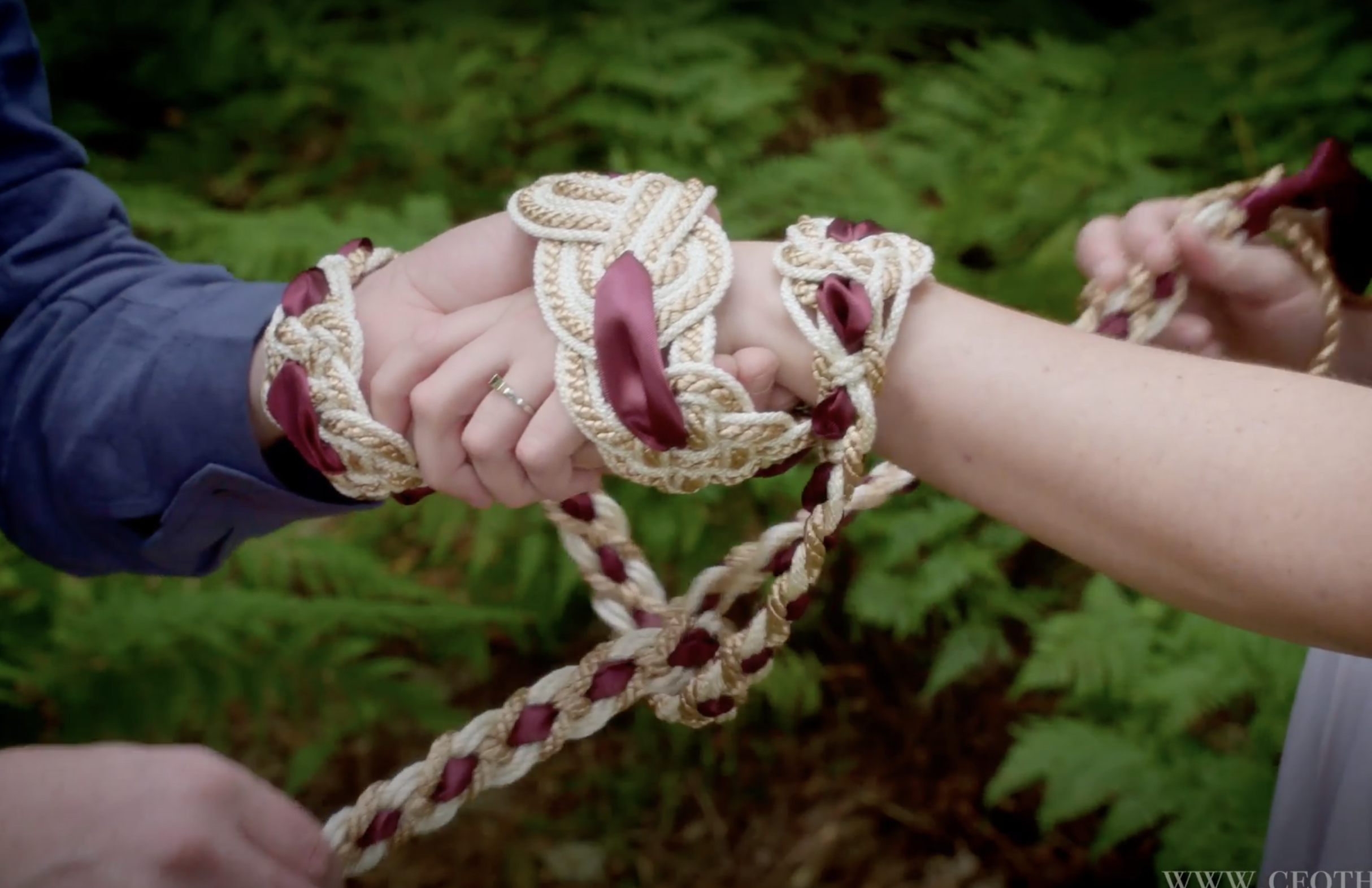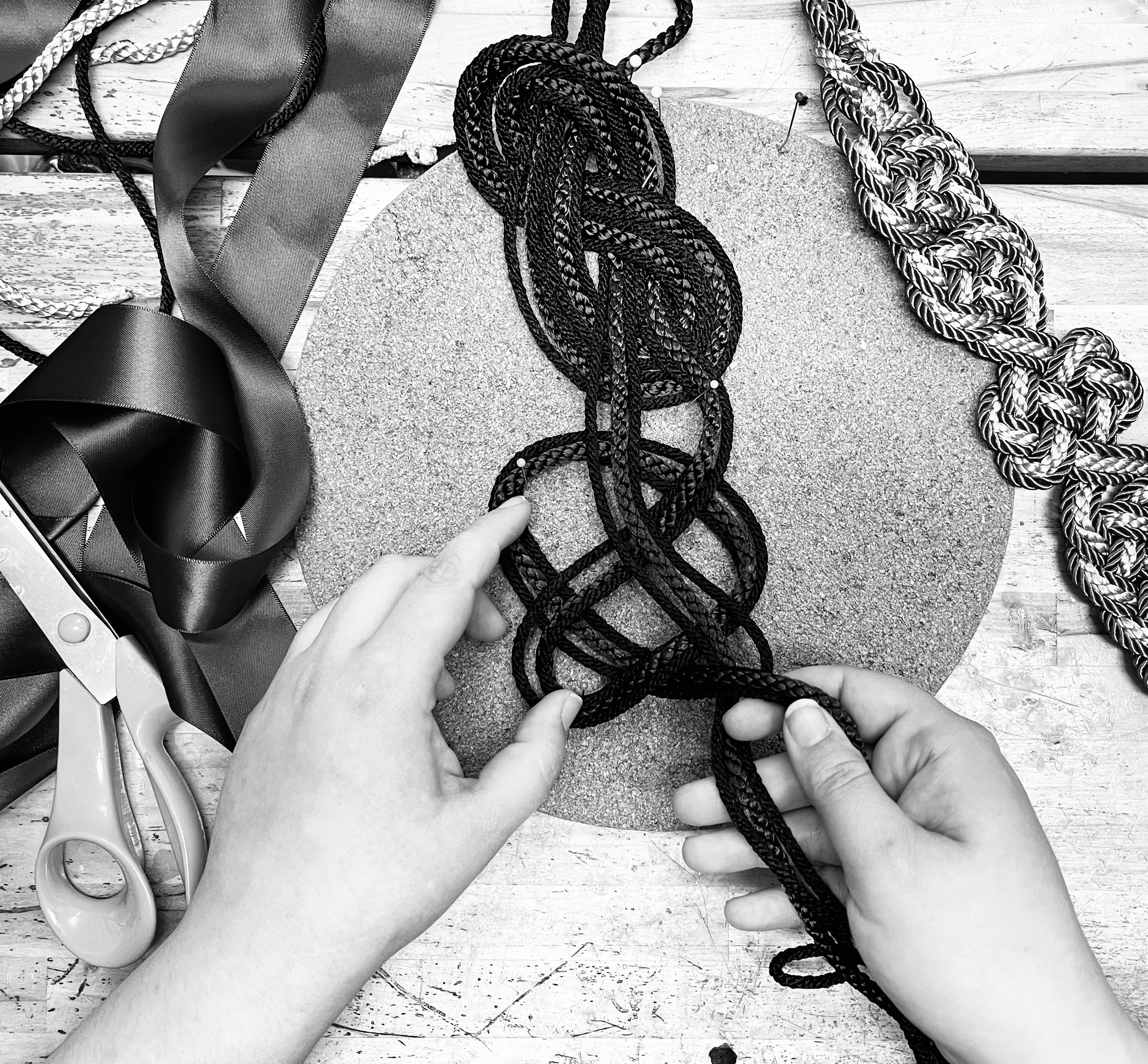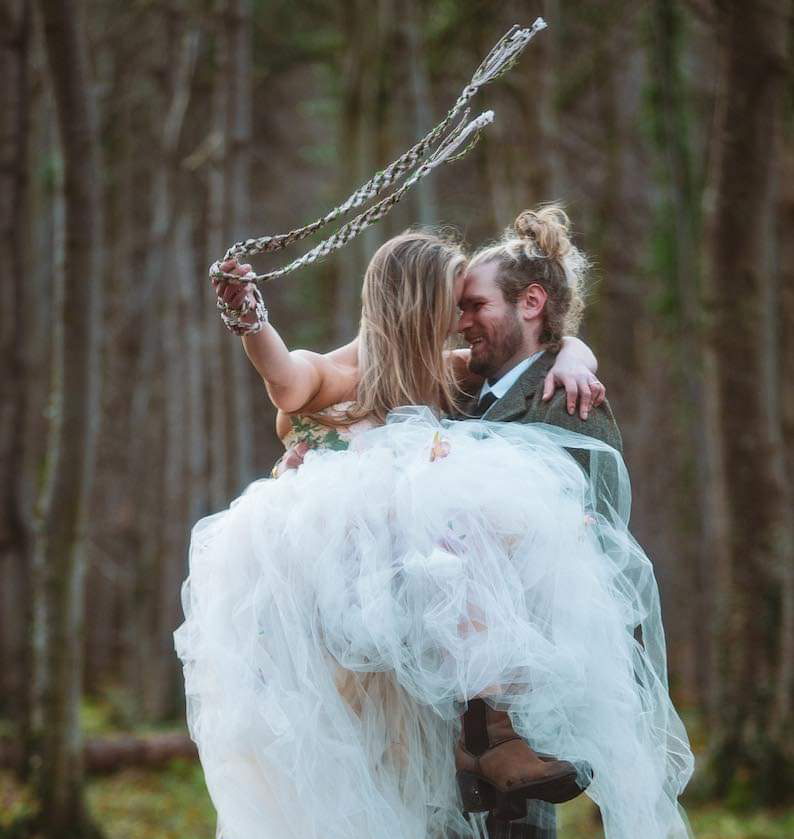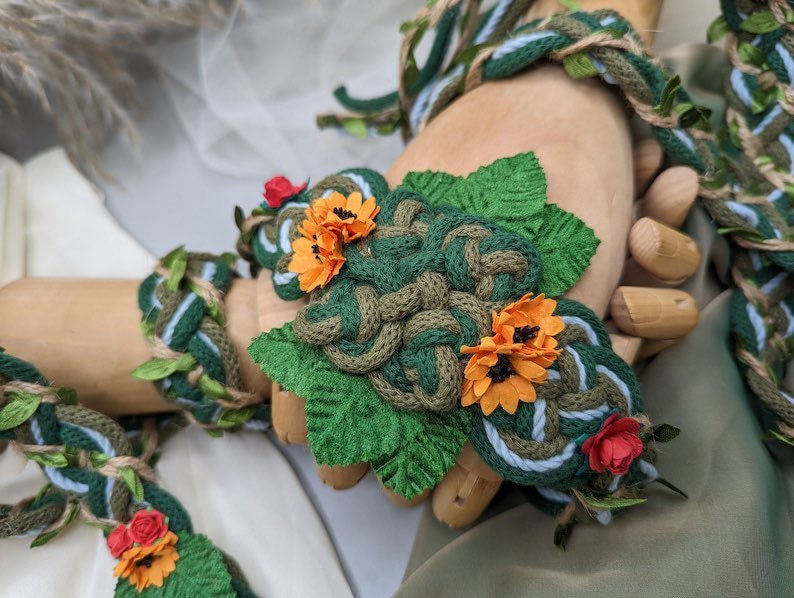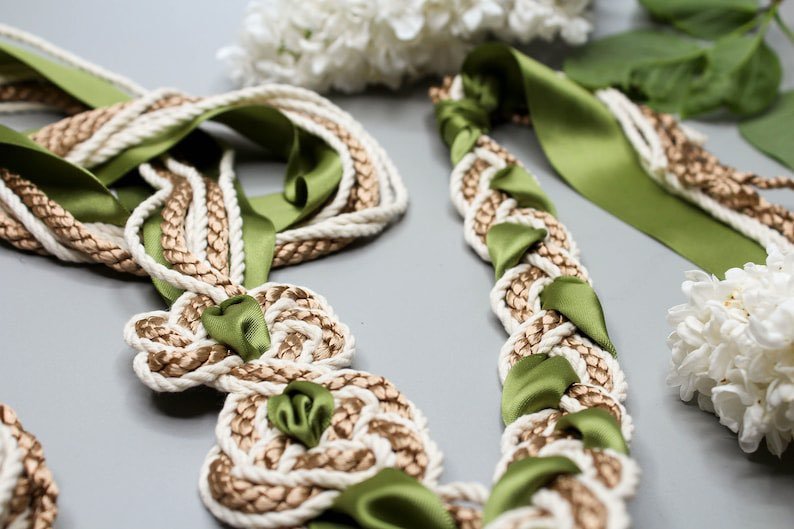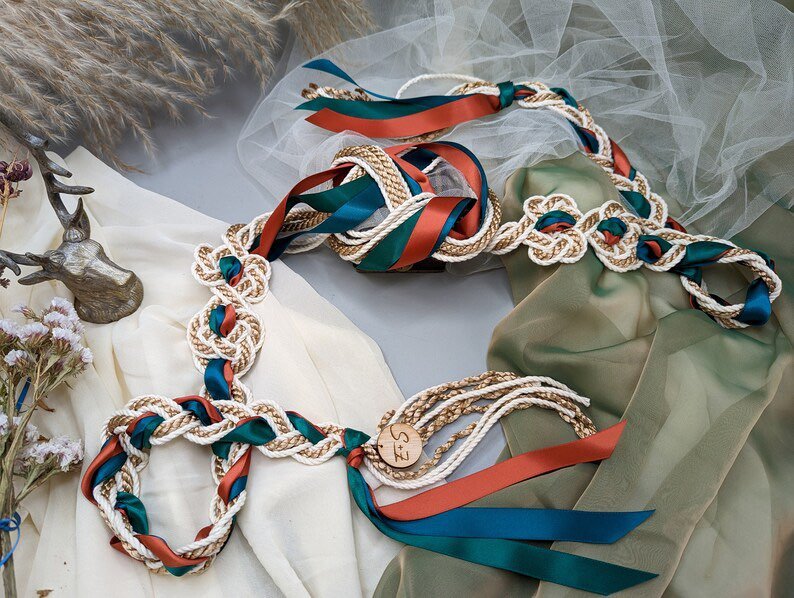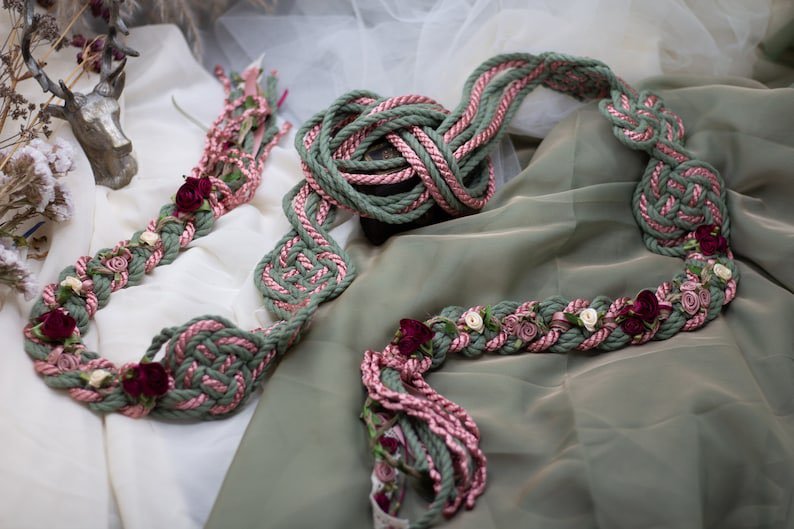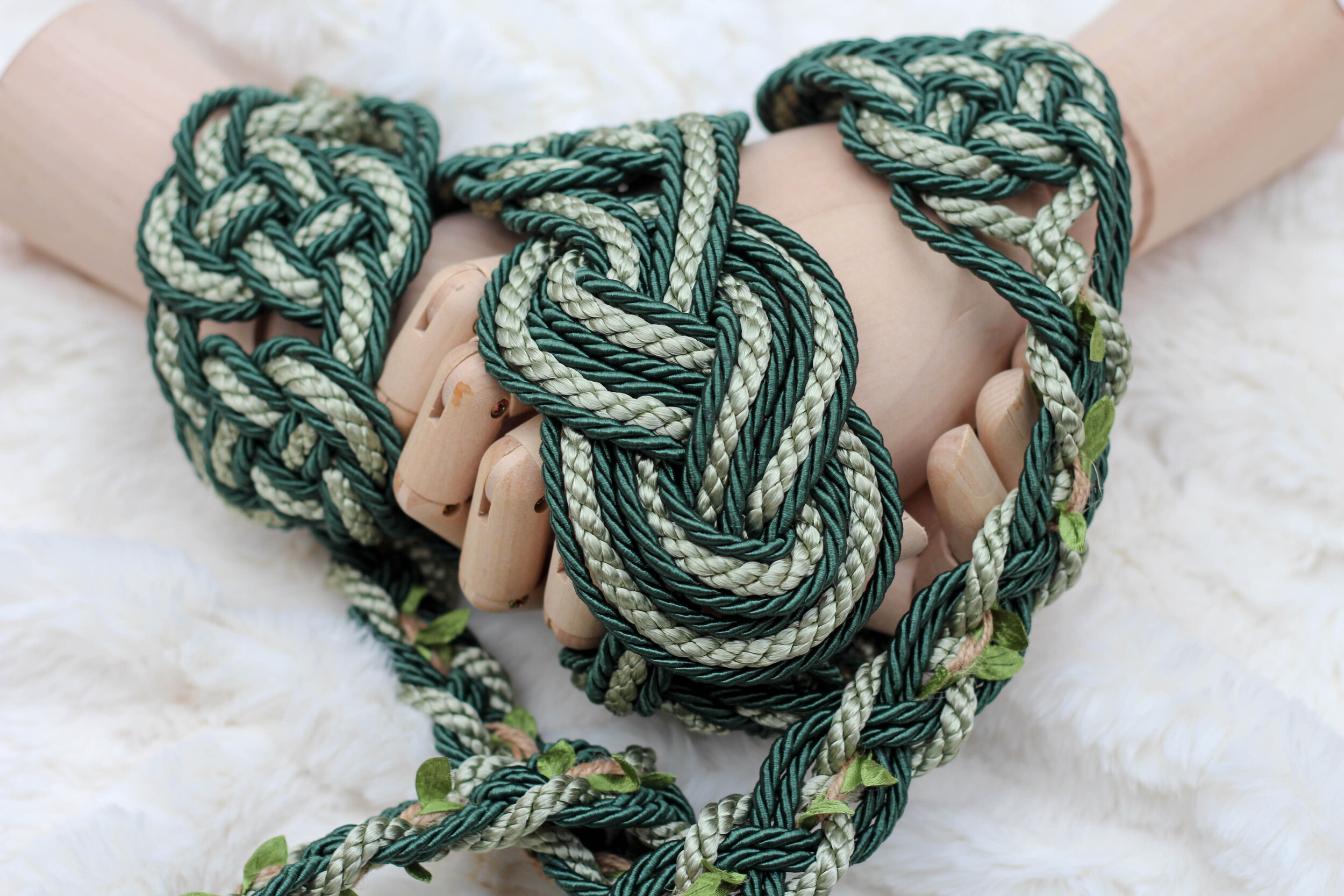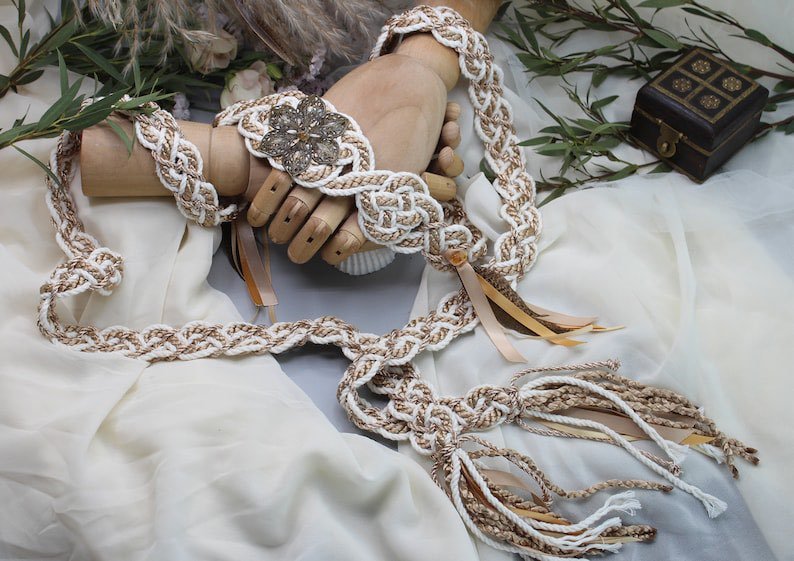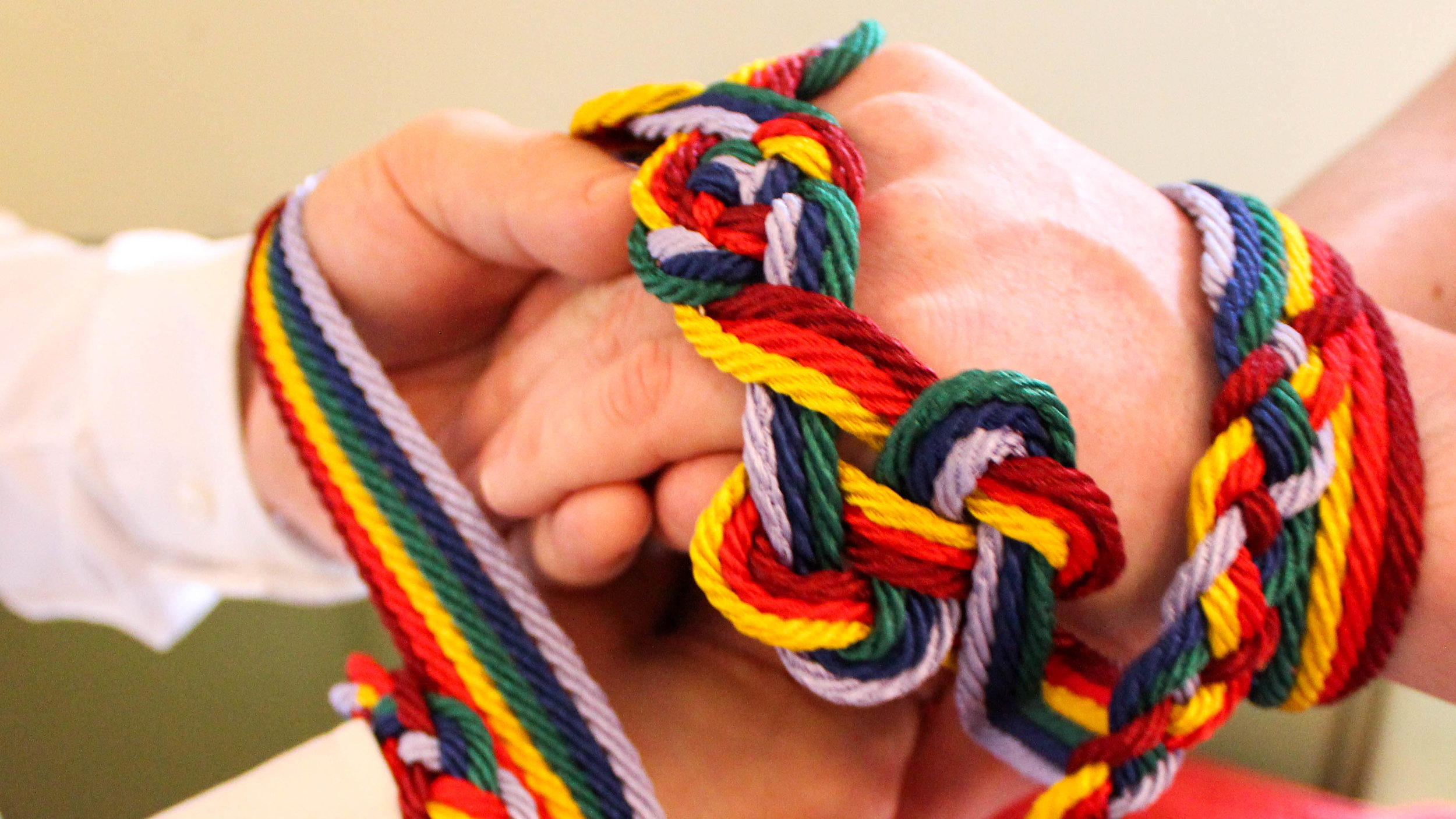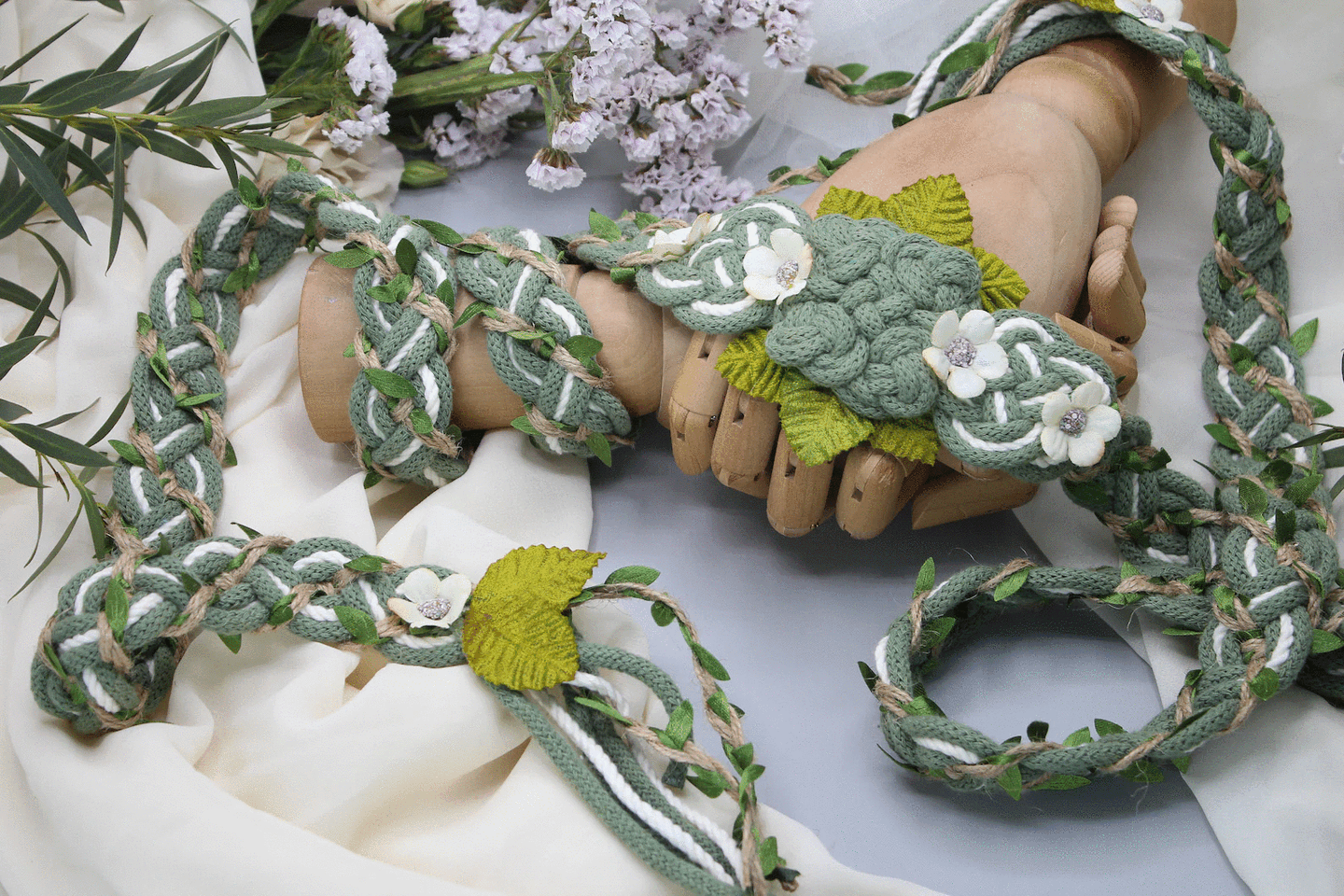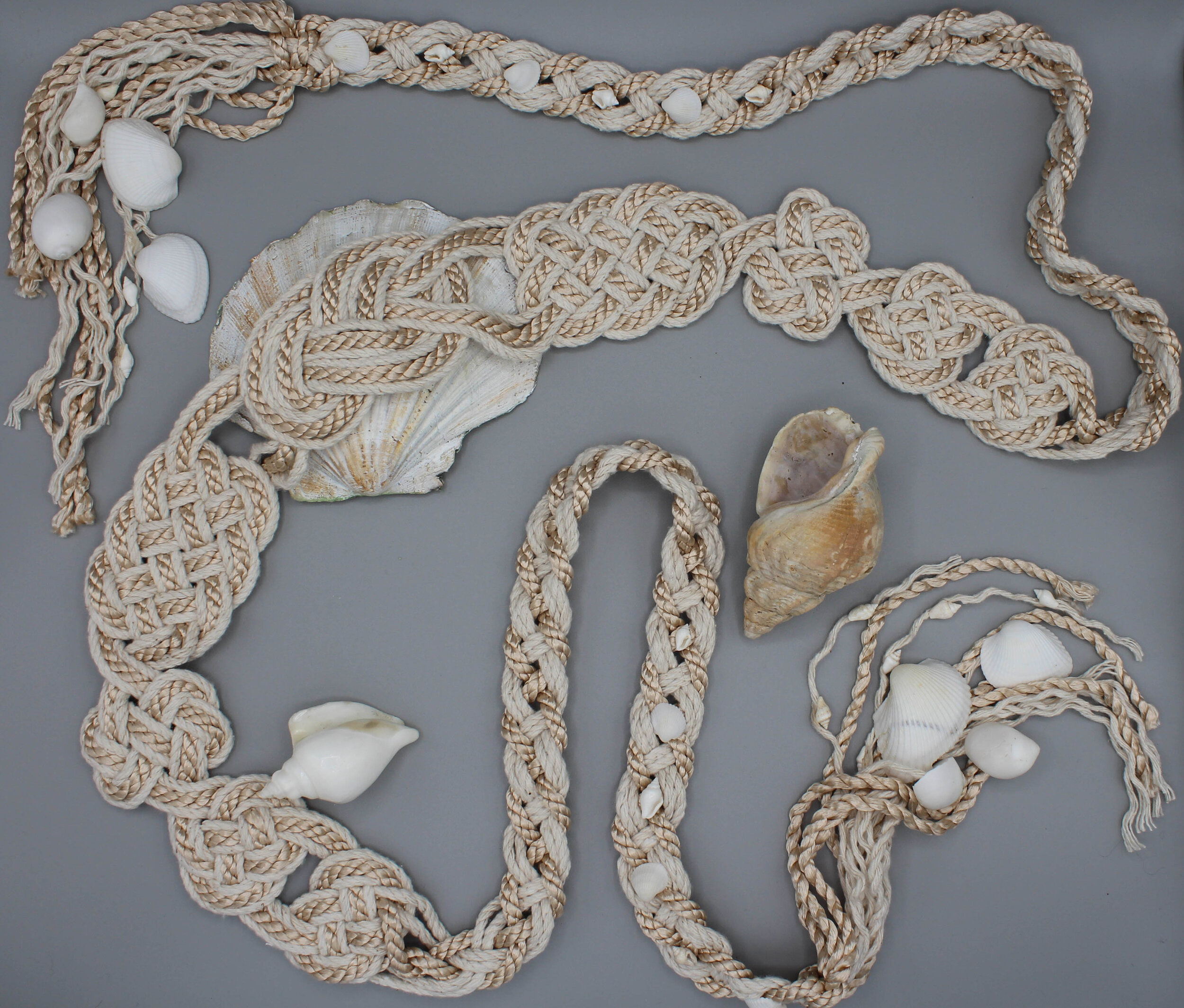Welcome to Ceotha
Tie the knot with an artisan Celtic Handfasting Cord
A unique way to celebrate your one-of-a-kind love: Ceotha's handfasting cords weave together ancient Celtic ritual, dazzling intricate craftsmanship, and a passion for making your special day completely unforgettable.
On this site you can find out all about handfasting and Ceotha’s cords, including:
Resources on how to tie the knot and information about handfasting tradition (Jump to handfasting resources)
How to choose and customise your own bespoke Ceotha cord, as well as information the materials I use and the meaning of different knots and colours (Jump to Ceotha Design)
For the most customisation options, browse our shop or, if you prefer, our etsy shop
Shop this cord
About Handfasting
Handfasting is the ancient Celtic practice of binding a couple's hands in a ceremony that expresses their commitment to each other. It was originally believed to forge a bond that would last through this life and the next! Whatever your philosophy - whether you choose a humanist ceremony, a church wedding, or something else altogether for your special day - handfasting is a powerful symbol of enduring commitment. Read more about the history of handfasting here, and discover how it can become part of your celebration.
About Ceotha
Based just outside the village of Roslin, Scotland - but shipping worldwide - I specialise in designing and crafting artisanal handfasting cords which reflect the couple's relationship and their unique celebration of love. The signature of my designs are Celtic knots which draw together the symbolism of handfasting, the care I take to make each cord perfect, and - most importantly - your love for one another.


